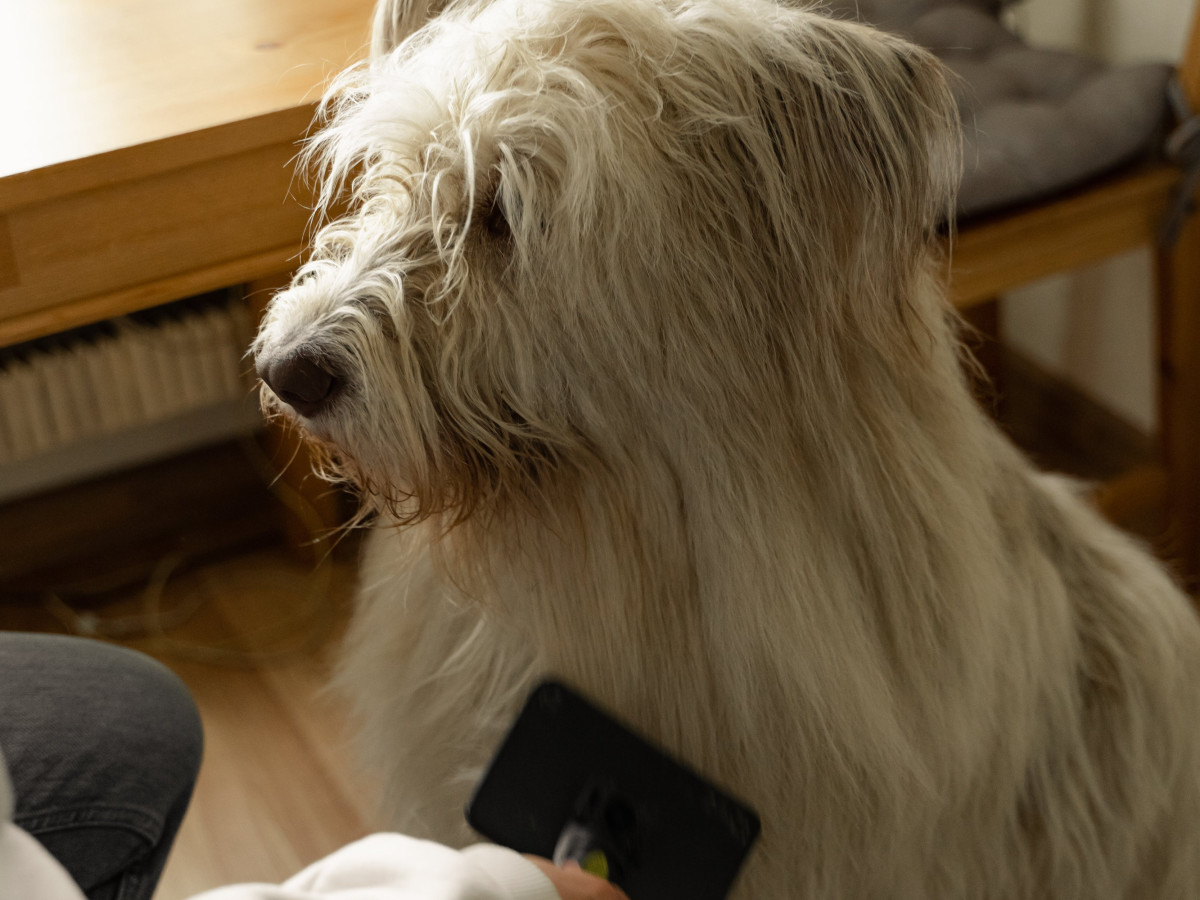In this article, Dr. Mark presents a canine keto diet that has seen success as a treatment for epileptic dogs who have not responded to medications. Here we are looking specifically at focal seizure in dogs and treatment options. However, many of the diet principles apply to various types of canine epilepsy. If you have questions about the diet or questions specific to your dog, please ask them in the comments section, and we will get back to you quickly.
Dear Dr. Mark:
My dog is a 3year old King Charles Cav. He has focal seizures, especially he chases and bites at the air as if trying to catch something. I’m hoping there’s a home remedy we can try. The vet gave him phenobarbital which didn’t seem to help, and after reading about it, it didn’t sound like a good drug with bad effects. What can we do from home, if anything?
Thanks,
Ric F.
Treating Focal Seizures in Dogs with a Special Diet
Dear Ric:
All medications have side effects, and those that work on seizures in dogs can be quite severe. I have treated many patients over the years with recurrent severe seizures that cause long term nervous effects and depression. In this type of case, they definitely benefit more from the meds than having an occasional seizure.
So, if the severity of the seizures are so mild that they do not justify the medication, what can you do at home? This article includes a whole food diet that I developed specifically for dogs with seizures. An effective treatment for focal seizures in dogs is to switch their diet to the ketogenic diet. Accordingly, you can then test to see if an increased blood ketone level along with a reduction in blood glucose, helps with their epilepsy.
Based on my own anecdotal experience, I can say that the ketogenic diet will reduce the frequency and severity of your dog’s seizures. There is still not a lot of research to back this up, but what is available supports its use. [1] This diet concept has been in use for humans with non-treatable epileptic seizures since the 1920s.
The studies available show that dogs fed an MCT oil diet for 3 months have a reduced number of seizures. In some dogs, seizures stopped, although the majority of dogs fed in this way just had fewer seizures. The diet has also been shown to be effective for anxiety disorders like chasing and stranger-directed fear [1].
If the diet is not enough, and your dog is still having seizures, you may have to reconsider medication. However many dogs with infrequent focal seizures do fine if never given the anti-epileptic medicines.There will be moderate progression of epilepsy in some dogs. I mostly see problems in dogs
experiencing grand mal seizures, where the family is most concerned about the dog falling and
getting hurt. If this is a daily occurrence, then you will need to reconsider this approach. Certainly if you need to contact us again about this, please do so.Please keep us posted in the comments section.
Best Regards,
Dr. Mark
Focal Seizure In Dogs Treatment
As a veterinarian, I strongly support a ketogenic diet with nutrient-rich foods like fatty meats, oils, sardines, vegetables, pumpkin, raw bones, and eggs as a focal seizure treatment in dogs. However, there is no way to tell if a dog will respond to a ketogenic natural diet before starting it. Therefore, I would recommend trying it for 3 months and keeping a seizure diary so that you can track whether the seizures are of a different frequency with the new diet.
The Keto Dog Diet for Epilepsy: 3 Month Trial
There are several alternatives, but the best thing would be to try an easy formula for now, and if things go well, switch to a more complete diet in the future.

Dog Keto Diet Components
1. Fatty Meat
You need to provide about 200 grams (approximately 1/2 a pound) of meat per day for a 60-pound dog. You can cook this if you do not want to give it raw. However, if you do, there will be heterocyclic amines, one of the contaminants in high levels in those overcooked, dry, processed diets. I recommend trying salmon, antibiotic-free chicken, antibiotic-free beef, or lamb.
2. Coconut Oil
Give 2 tablespoons per day (for a 50-60 pound dog), as this will provide some of his caloric needs and provide another source of fats for the ketogenic diet. The MCT oils, including coconut oil, can result in fewer seizures each month. According to some studies, the overall reduction using this type of oil was 42% fewer seizures. [2]
3. MCT Oil
Medium-chain triglycerides (MCTs) are transported to the liver and converted into ketone bodies at a higher rate with MCTs than other oils. They will produce more ketones per calorie than any other diet source [3]. A pure MCT oil should be given, 1 tablespoon per day, and although it may be better in a ketogenic diet than coconut oil, it is not as readily available in supermarkets. (If you cannot find pure MCT oil where you live, just increase the amount of coconut oil and give 3 tablespoons per day.)
4. Sardines
Fatty fish will provide your dog with omega-3 fatty acids, which may reduce (or hopefully eliminate) his need for phenobarbital and other anti-epileptic drugs. There still needs to be much more research done in this area, because about a third of dogs do not respond to medications like phenobarbital. This fatty acid can help them respond [4]. The seizure frequency was reduced by 86% in one epileptic feeding trial [1]. Therefore, feed a sardine every day as part of his diet.
5. Other Vegetables
Other fresh vegetables that can be added to their diet include English peas, kale, and green beans for fiber and nutrients.
6. Canned Pumpkin
One of the most nutritious foods, pumpkin’s prebiotic fiber is important in helping the bowels function normally. You can start out giving 1 tablespoon, but you can give 2 if you decide that it is needed. Canned pumpkin is often used for firming up loose stools in dogs as well. Nutrients found in canned pumpkin include: Vitamin A, Vitamin K, Vitamin C, Vitamin E, and Vitamin B6. Minerals in canned pumpkin include Potassium, Magnesium, Iron, Copper, and Manganese. Canned pumpkin is also a good source of antioxidants, such as beta-carotene and lutein.
7. Raw Bones
About 10% of his diet should be made up of raw bones. The bones should be the type that he will digest, not just gnaw on. Buy a few chicken wings or another edible bone and make sure he does not react to them. If he does fine, you can also use raw chicken necks and thighs as part of his diet. (If you can maintain a novel protein source diet, you should use the bones from that fish or animal, whether a salmon, duck, deer, or other animal.)
In the instance that your dog cannot or will not eat raw bones for some reason, you can substitute egg shells or bone meal. You can find egg shells from several sources online and can get food quality bone meal from most health food stores.
8. Eggs
Eggs are a great source of nutrients. I recommend feeding your dog a hard-boiled or poached egg 3-4 times a week.
In Conclusion
While one-third of dogs with epilepsy do not respond to medications, this canine keto diet may be able to help your dog reduce their frequency and intensity. As always, we welcome your comments, questions, and experiences in the comments section below.
Sources
- Masino SA, Freedgood NR, Reichert HR, Director CJ, Whittemore VH, Zupec-Kania B. Dietary intervention for canine epilepsy: Two case reports. Epilepsia Open. 2019 Feb 14;4(1):193-199. doi: 10.1002/epi4.12305. PMID: 30868131; PMCID: PMC6398089. https://www.ncbi.nlm.nih.gov/pmc/articles/PMC6398089/
- Molina J, Jean-Philippe C, Conboy L, Añor S, de la Fuente C, Wrzosek MA, Spycher A, Luchsinger E, Wenger-Riggenbach B, Montoliu P, Gandini G, Menchetti M, Ribeiro JC, Varejão A, Ferreira A, Zanghi B, Volk HA. Efficacy of medium-chain triglyceride oil dietary supplementation in reducing seizure frequency in dogs with idiopathic epilepsy without cluster seizures: a non-blinded, prospective clinical trial. Vet Rec. 2020 Oct 31;187(9):356. doi: 10.1136/vr.105410. Epub 2020 Jun 12. PMID: 32532842; PMCID: PMC7799411. https://www.ncbi.nlm.nih.gov/pmc/articles/PMC7799411/
- Kelley SA, Hartman AL. Metabolic treatments for intractable epilepsy. Semin Pediatr Neurol. 2011 Sep;18(3):179-85. doi: 10.1016/j.spen.2011.06.004. PMID: 22062942. https://pubmed.ncbi.nlm.nih.gov/22062942/
- Scorza FA, Cavalheiro EA, Arida RM, Terra VC, Scorza CA, Ribeiro MO, Cysneiros RM. Positive impact of omega-3 fatty acid supplementation in a dog with drug-resistant epilepsy: a case study. Epilepsy Behav. 2009 Aug;15(4):527-8. doi: 10.1016/j.yebeh.2009.05.013. Epub 2009 Jun 21. PMID: 19541544. https://pubmed.ncbi.nlm.nih.gov/19541544/




